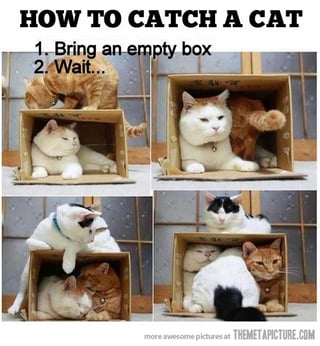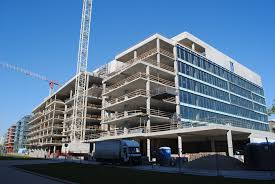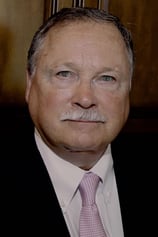 When you get an adjustable rate home loan, the Promissory Note is always very, very precise about any interest rate readjustments. For example, "Every six months the Rate will readjust to 3.57% over the weekly average yield on 12-month constant maturity Treasuries."
When you get an adjustable rate home loan, the Promissory Note is always very, very precise about any interest rate readjustments. For example, "Every six months the Rate will readjust to 3.57% over the weekly average yield on 12-month constant maturity Treasuries."
When most banks write a 10-year, fixed rate commercial loan, there is almost always a provision that calls for one rate readjustment or "reset" at the end of five years. The rate is then fixed for the next five years. This is as close as you're likely to ever get to a 10-year, fixed rate commercial loan on an office building or industrial building.

What has always amazed me is that the language surrounding the rate readjustment is often very loosey-goosey. Instead of saying that the rate will adjust to so many basis points over some index, the language will effectively look like this: "At the end of five years, the loan will readjust to whatever rate the bank is charging on similar loans at that time."
Really? That loosey-goosey? Yup. Often these fixed rate commercial loans from banks are larger than $2 million, but no one seems to care that the borrower is completely at the mercy of the bank. Legally the bank could raise the rate from 5.5% to 7.5%, even though other banks are quoting just 6.0% at the time. Later I will explain why this is not really an issue.
A rate reset is more than just a rate readjustment. The amortization of the loan is also accelerated. For example, the typical bank permanent loan on an office building is a fixed rate, ten-year loan with a rate reset at the end of year five. Most bank permanent loans start out with a 25-year amortization, but when the monthly payments are re-computed at the rate reset, we are five years into the loan. Therefore the remaining loan balance is reamortized over just 20 years (although it is still all due and payable at the end the the next five-year period) at that time.

So why don't commercial borrowers freak out over the loosey-goosey language of the rate reset? For some reason commercial bankers don't believe in capitalism. They don't believe in charging whatever interest rate the market will bear. Bankers think it is a sin to charge a higher interest rate than the bank down the street.
As a result, banks across the country almost always charge about the same interest rate for commercial real estate loans. Remember, a banker would consider himself a sinner if he charged a higher interest rate than his competitor, as if he was some sort of filthy capitalist.
Now you might find a 0.25% to 0.50% difference between banks on commercial real estate loans, but you will almost never see one bank quoting 5.5% and another bank 7.5%.

Okay, let's review what you've learned today:
1. Rate readjustments are called resets in commercial mortgage-ese.
2. Most commercial loans have a 25-year amortization.
3. Ten years is usually the longest term available on a fixed rate, commercial loan.
4. The rate will reset at the end of year five to whatever rate the bank is then charging.
5. The interest rate reset language is usually surprisingly loosey goosey.
6. Banks around the country charge almost same the same rate on commercial loans.

7. Banks do not charge whatever the market will bear. Capitalism is bad.
8. It is a sin for a banker to charge a higher interest rate than a bank down the street.
9. Therefore borrowers rarely get hit with an above-market rate increase at the reset.
Are you an accredited investor? Please focus on this for a moment. You have money set aside for your retirement. You have more dough set aside for your kids' college educations. The stock market is booming right now, and I personally think that it will continue to boom; but its danegerous to have all of your eggs in just one investment basket.
You really need to consider investing in first mortgages. Private money (hard money) first mortgages from Blackburne & Sons are yielding 8% to 12% today - although I urge you in the strongest terms to stick with our less-risky, lower-yielding ones. Make no mistake: You can easily lose most or all of your investment in first mortgages. Investing in first mortgages involves substantial risk, and this blog article is not intended to be a solicitation to invest in our securities. Such an solictation will always be accompanied by a Private Placement Memorandum. We're just talking about the concept - the idea - of hard money first mortgage investments today.

I am about to surprise you. Blackburne & Sons has been in the hard money business for thirty-seven years now. Are we the oldest surviving hard money shop? Not quite. I am an attorney, licensed in both California and Indiana. To some this may sound corny, but my two sons and I are cadet graduates of Culver Military Academy (Honor System), and all three of us are Eagle Scouts. Okay, maybe a little corny. Ha-ha!
If you click on the maroon button below, no one is ever going to call you and try to sell you first mortgages. We sell exclusively by email, and once you start nibbling on our offerings, you will probably miss out on your first few deals because you waited too long. We have well over 1,000 (1,500?) private investors in our various loans. My point is not that we are wonderful. My point is that no one is ever going to call you to hard-sell an investment. Please feel free to camp out on our investor email list for five years before you make your first investment move. We're like Christmas tree farmers, planting a half-decade ahead.
You can invest with incredibly small amounts - $5,000 - but you absolutely, positively must be an accredited investor - a $1 million net worth exclusive of your personal residence. First mortgage investing is HUGE in California, but the new JOBS Act makes it possible for accredited investors residing outside of the State of California to now invest with us. Do this - and then just watch our investments for a few years.






 Investopedia defines a core asset as follows: A
Investopedia defines a core asset as follows: A 









 Everybody gets some wonderful free commercial loan goodies today. Nobody spends a penny. The first freebie is our wonderful commercial loan calculator developed by my son, George IV. Guys, a commercial loan calculator is NOT about computing the monthly payments on a commercial loan. That's kid's play. There must be 10,000 commercial loan payment calculators available on the internet.
Everybody gets some wonderful free commercial loan goodies today. Nobody spends a penny. The first freebie is our wonderful commercial loan calculator developed by my son, George IV. Guys, a commercial loan calculator is NOT about computing the monthly payments on a commercial loan. That's kid's play. There must be 10,000 commercial loan payment calculators available on the internet.
















 As you get into the very large commercial loans, especially in California, the issue of earthquake risk looms large. When lending on large commercial properties constructed prior to 1980, commercial lenders will sometimes require a PML Report.
As you get into the very large commercial loans, especially in California, the issue of earthquake risk looms large. When lending on large commercial properties constructed prior to 1980, commercial lenders will sometimes require a PML Report.






 Today we are going to teach you how to underwrite a $50 million commercial construction loan.
Today we are going to teach you how to underwrite a $50 million commercial construction loan.
